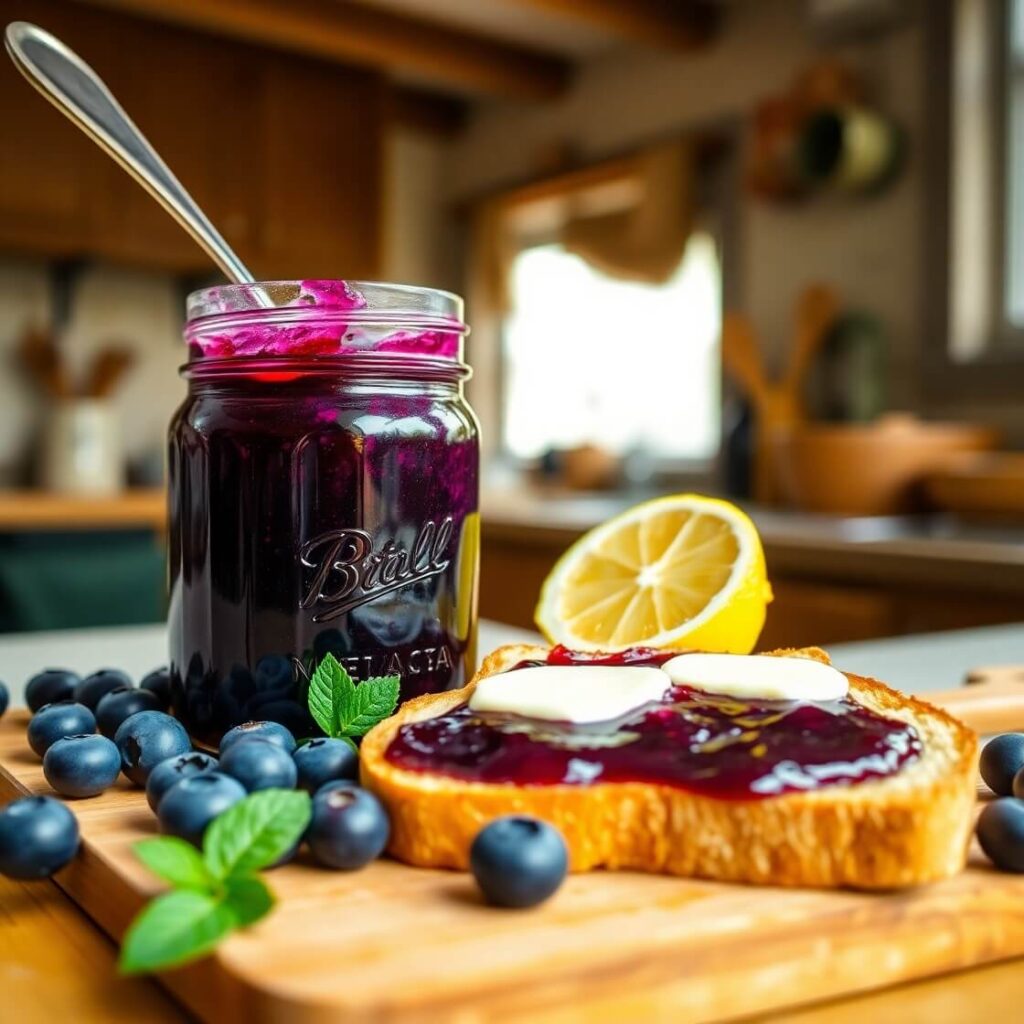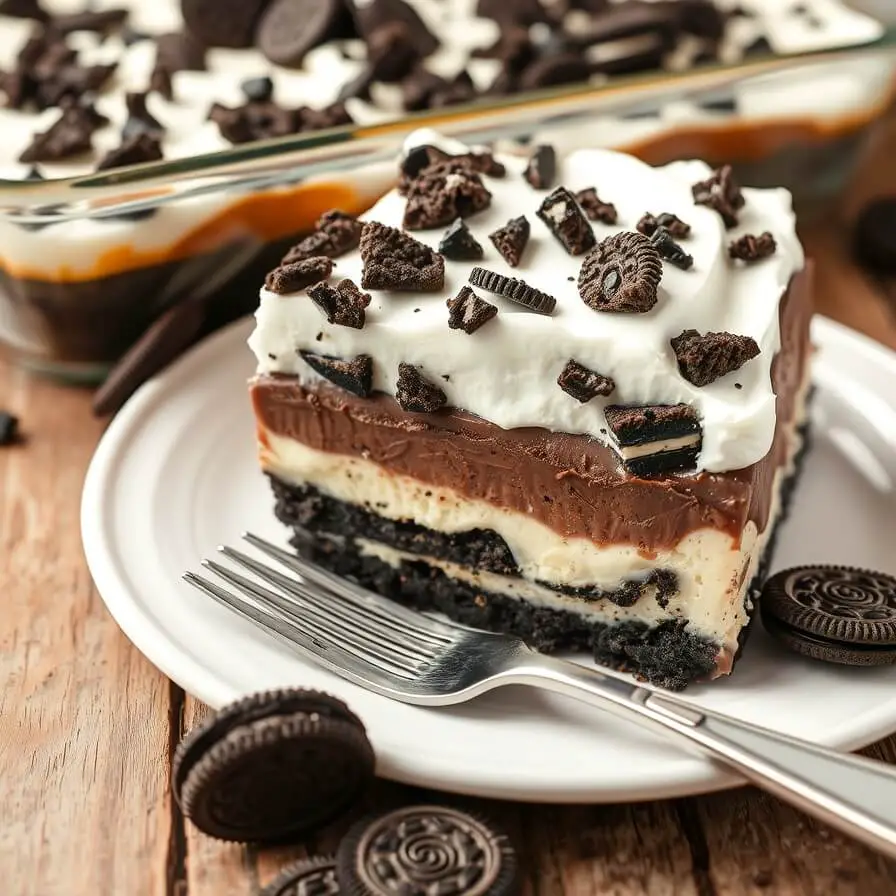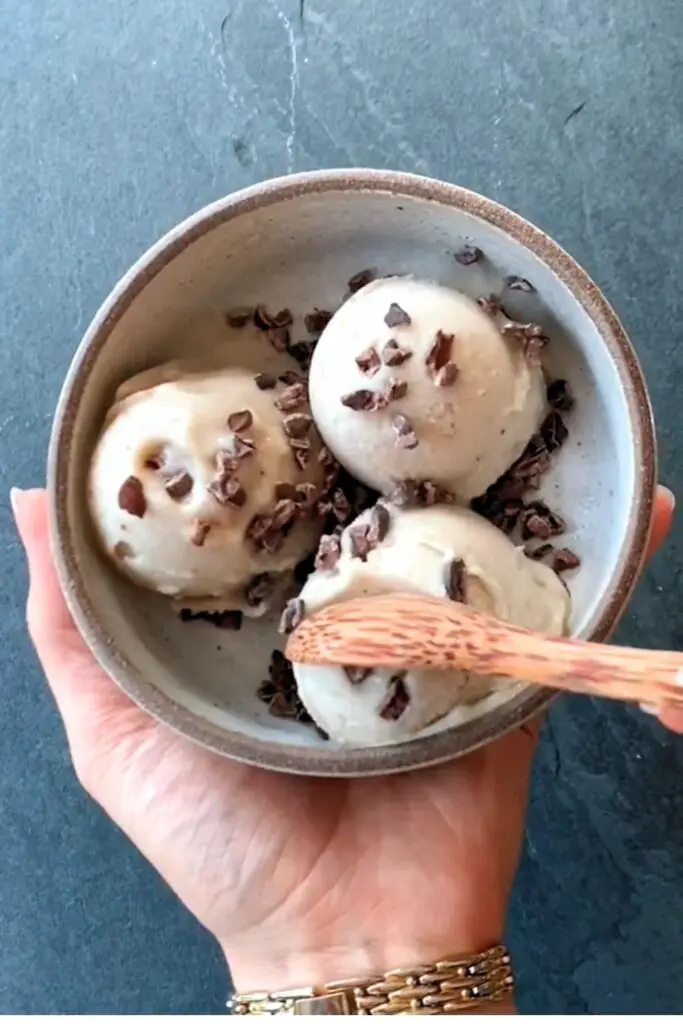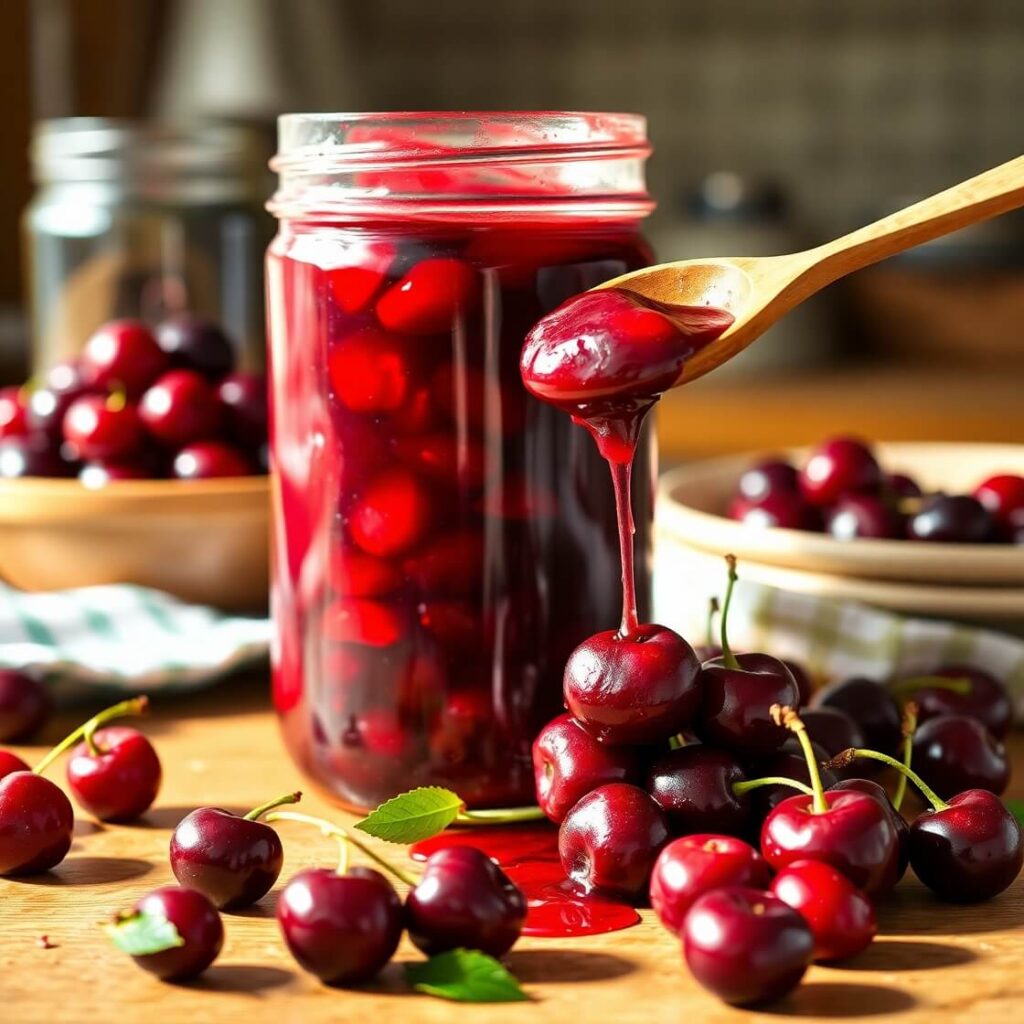Simple Small-Batch Blueberry Jam Recipe
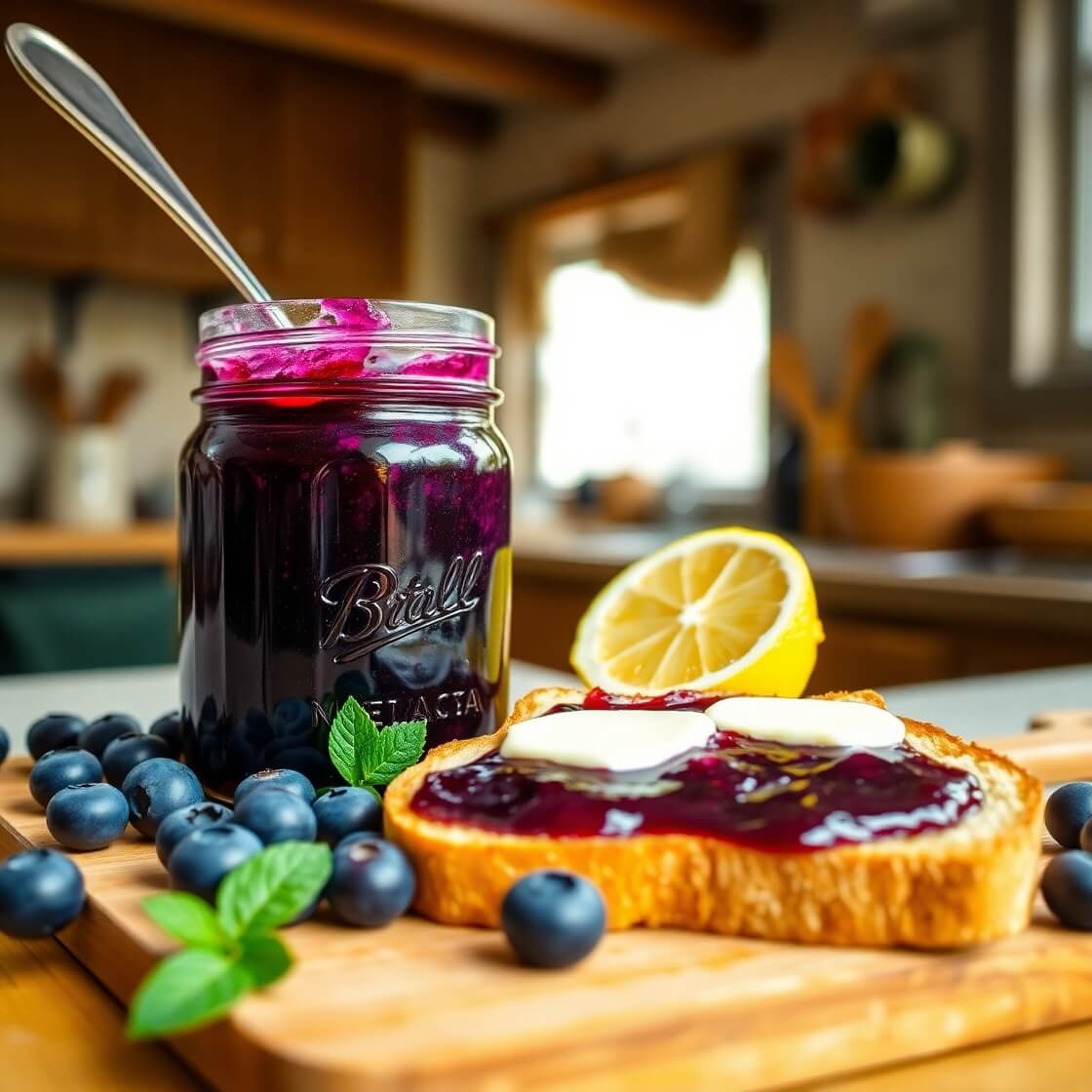
There’s something magical about making jam at home. For me, blueberry jam has always been more than just a spread—it’s a memory in a jar. I still remember the first time I made it during peak summer, when the berries were so ripe and sweet they stained my hands deep purple within minutes of picking. Capturing that vibrant flavor felt like bottling up a season, one spoonful at a time.
Homemade jam isn’t just about preserving fruit; it’s about preserving moments. And while store-bought jam might be convenient, nothing compares to the freshness of homemade blueberry jam spread over warm toast or drizzled on pancakes. The best part? You don’t need to be an expert to make it. With just a few ingredients and a bit of patience, you’ll end up with jars of jewel-toned jam that taste every bit as beautiful as they look.
If jam-making has ever felt intimidating, this recipe is here to prove otherwise. It’s simple, beginner-friendly, and delivers results so good you may never buy store-bought again.
Ingredients for Blueberry Jam Recipe
When it comes to jam-making, simplicity is key. That’s the beauty of this blueberry jam—it only calls for a handful of ingredients, most of which you probably already have in your kitchen.
Here’s what you’ll need:
- Fresh blueberries: The star of the recipe. Choose ripe, plump berries with a deep blue color. You can also use frozen blueberries if fresh ones aren’t available, just be sure they’re unsweetened.
- Granulated sugar: This not only sweetens the jam but also helps preserve it. Sugar binds with water in the fruit, preventing spoilage.
- Fresh lemon juice: Essential for balancing the sweetness and bringing out the brightness of the blueberries. It also helps the jam set by providing natural pectin.
- Lemon zest (optional): For a fragrant, citrusy lift that pairs beautifully with blueberries.
That’s it—just three or four ingredients are all you need. Unlike commercial jams, there are no artificial flavors or preservatives here. This is as natural and wholesome as it gets.
The beauty of this ingredient list is its flexibility. If you prefer your jam a little less sweet, you can reduce the sugar slightly. If you want a more intense berry flavor, you can even mix in other berries like blackberries or raspberries.
How to Make This Blueberry Jam Recipe
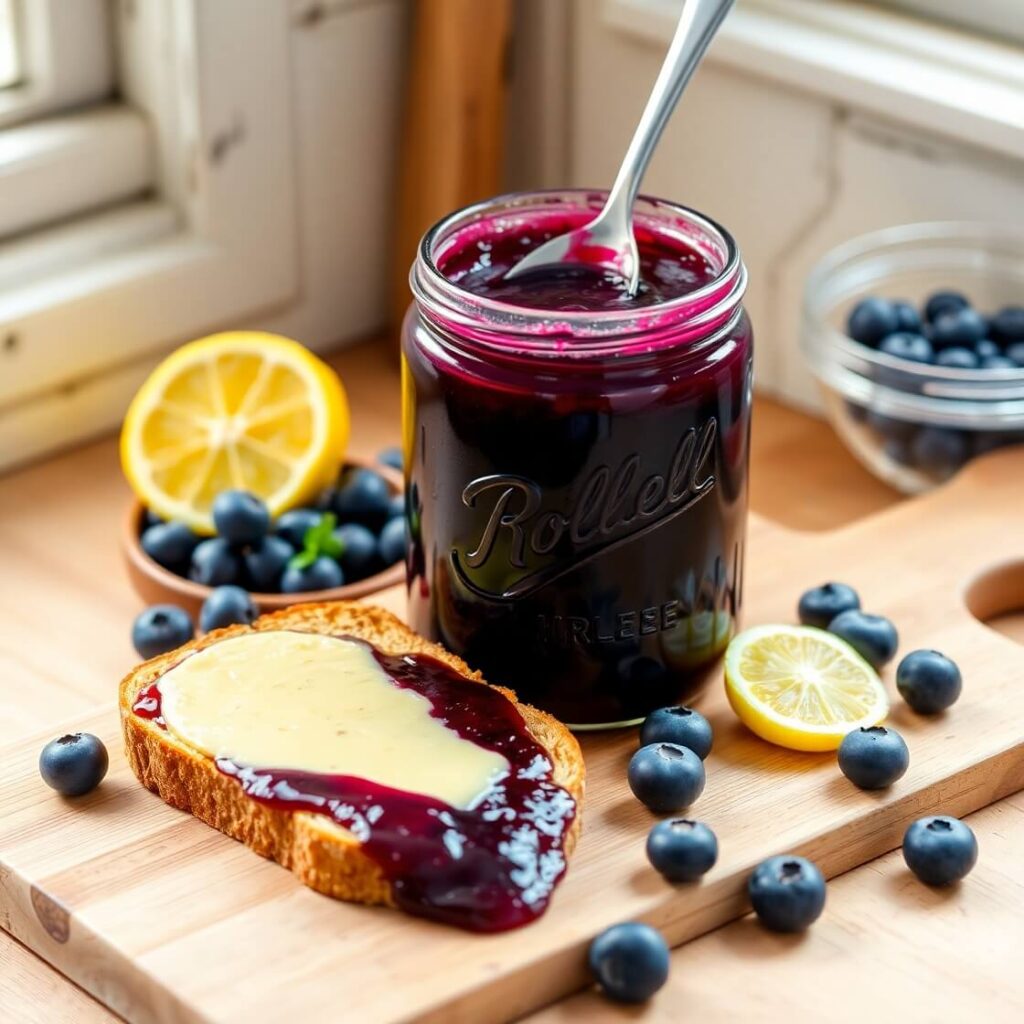
Making jam is a process that feels both simple and satisfying. Here’s a step-by-step guide to walk you through it:
Step 1: Prepare the blueberries
Rinse the blueberries thoroughly under cool running water. Pick out any stems, leaves, or shriveled berries. Pat them dry with a clean kitchen towel.
Step 2: Combine ingredients
In a heavy-bottomed saucepan, add the blueberries, sugar, and lemon juice. If you’re using lemon zest, add it here too. Stir gently to coat the berries in sugar.
Step 3: Start cooking
Place the saucepan over medium heat. As the blueberries heat up, they’ll start to release their juices. Stir occasionally to prevent sticking. You’ll notice the mixture becoming liquidy as the berries break down.
Step 4: Mash the berries
Once the mixture is bubbling, use a potato masher or the back of a spoon to gently mash the blueberries. This helps release more juice and gives the jam a smoother texture. If you like chunky jam, mash only lightly.
Step 5: Boil and thicken
Raise the heat slightly to bring the mixture to a gentle boil. Stir often and watch carefully as the jam thickens. This usually takes 20 to 25 minutes. You’ll know it’s ready when the jam clings to the back of a spoon instead of dripping off.
Step 6: Test for doneness
To test if your jam has set, place a small spoonful on a chilled plate. Let it sit for a minute, then push it with your finger. If the jam wrinkles and holds its shape, it’s ready. If not, continue cooking for a few more minutes.
Step 7: Cool and store
Remove the jam from the heat and let it cool slightly. Transfer it into clean, sterilized jars. Allow the jars to cool completely at room temperature before sealing and storing.
And just like that, you’ve made your own blueberry jam!
Print
Blueberry Jam Recipe
- Total Time: 40 minutes
- Yield: 3 1x
- Diet: Vegetarian
Description
This homemade blueberry jam captures the essence of summer in every spoonful. With just three simple ingredients—blueberries, sugar, and lemon juice—you can create a spread that’s bursting with fresh, fruity flavor. Perfect on toast, swirled into yogurt, or spooned over desserts, this jam is versatile and absolutely delicious. Making it at home not only gives you control over the ingredients but also fills your kitchen with the irresistible aroma of bubbling blueberries. Whether you’re preserving seasonal fruit or just looking for a new kitchen project, this blueberry jam is a recipe you’ll come back to again and again.
Ingredients
- 4 cups fresh or frozen blueberries
- 2 cups granulated sugar
- 2 tablespoons fresh lemon juice
- 1 teaspoon lemon zest (optional)
Instructions
- Rinse and prepare the blueberries, discarding stems or bad berries.
- In a heavy-bottomed saucepan, combine blueberries, sugar, lemon juice, and zest.
- Cook over medium heat until the berries release their juices.
- Mash gently with a potato masher for desired texture.
- Increase heat slightly and bring to a boil, stirring often until thickened (about 20–25 minutes).
- Test doneness with the chilled plate method.
- Let cool slightly before transferring to sterilized jars. Seal and store.
Notes
- For a richer flavor, add a splash of vanilla or a cinnamon stick while cooking.
- Adjust sugar depending on berry sweetness.
- For longer shelf life, process jars in a boiling water bath.
- Prep Time: 10 minutes
- Cook Time: 25–30 minutes
- Category: Spread / Condiment
- Method: Stovetop simmering
- Cuisine: American
Nutrition
- Serving Size: 3
- Calories: 42
- Sugar: 10g
- Sodium: 0mg
- Fat: 0g
- Saturated Fat: 0g
- Unsaturated Fat: 0g
- Trans Fat: 0g
- Carbohydrates: 11g
- Fiber: 0.3g
- Protein: 0g
- Cholesterol: 0mg
Clara’s Jam Making Tips
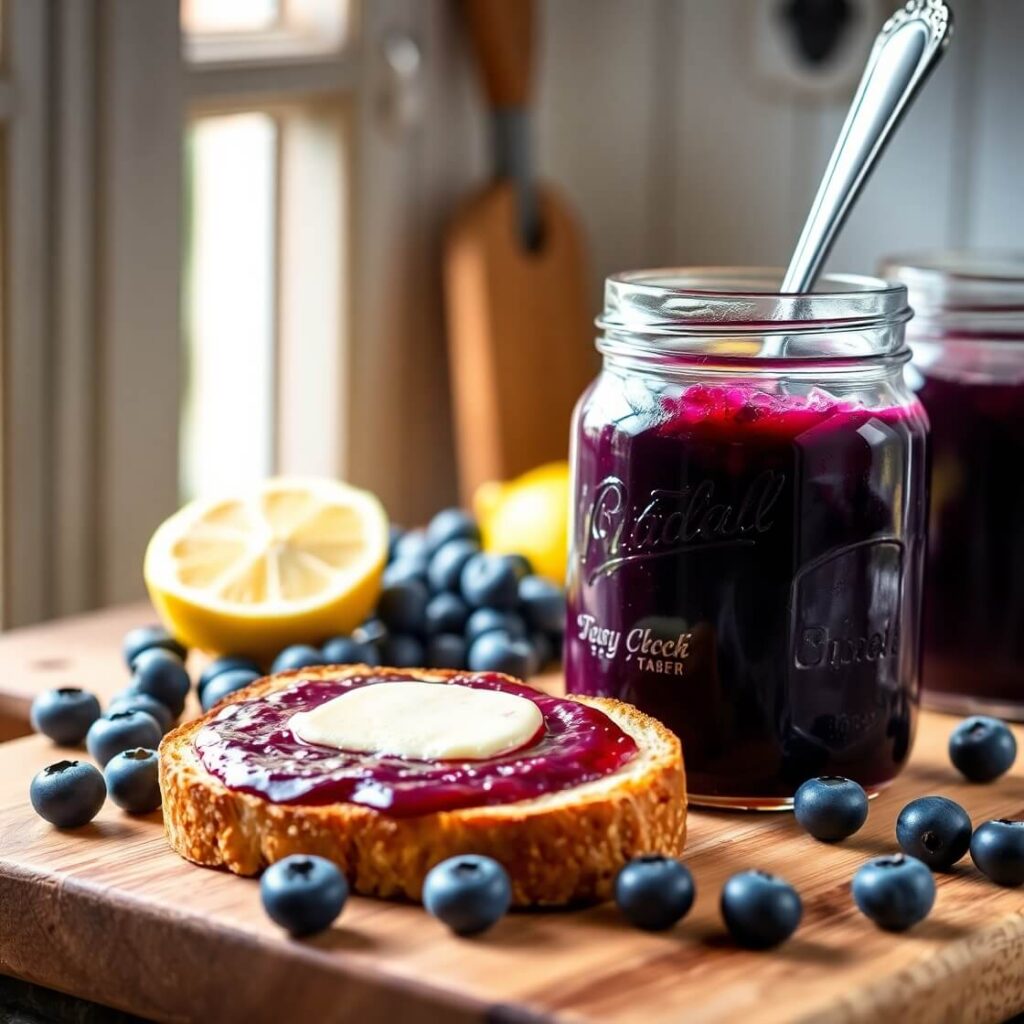
Making jam may seem straightforward, but a few tricks can help you achieve the best possible results.
- Use ripe fruit: The sweeter and juicier the blueberries, the better your jam will taste. Avoid under-ripe berries, as they can make the jam overly tart.
- Don’t skip the lemon juice: It’s not just for flavor—it helps the jam set. Without it, you may end up with a runny spread.
- Stir often while cooking: This prevents scorching at the bottom of the pan and ensures even cooking.
- Adjust sugar to taste: If your berries are very sweet, you can reduce the sugar slightly. Just remember, less sugar means a softer set and shorter shelf life.
- Cool completely before sealing: This prevents condensation from forming in the jars, which can affect the shelf life.
Following these little details makes the difference between good jam and truly unforgettable jam.
Common Mistakes to Avoid
Homemade jam is forgiving, but there are a few pitfalls to be aware of:
- Overcooking: If you cook the jam for too long, it can become overly thick and lose its fresh flavor. Test it often.
- Not sterilizing jars: Even if your jam tastes amazing, it won’t last if the jars aren’t properly sterilized. Always start with clean, hot jars.
- Skipping the doneness test: Guessing can lead to runny or overly stiff jam. Always do the plate test for accuracy.
- Using too much sugar substitute: Artificial sweeteners don’t work the same as sugar in jam. Use sparingly or look for special jam sugar blends.
- Not letting it rest: Sealing the jam while it’s too hot can create condensation inside the jar, which can shorten storage time.
Avoiding these mistakes ensures your jam comes out perfect every single time.
Storing Your Blueberry Jam
Storing blueberry jam properly is key to preserving its flavor and freshness.
If you’re planning to eat it within a week, simply keep the jar in the refrigerator once it’s cooled. For longer storage, the jam can be canned using the water bath method, which will keep it shelf-stable for up to a year.
Here are my storage tips:
- Always use sterilized jars for storage.
- Once opened, refrigerate the jam and use within 3 to 4 weeks.
- Store jars in a cool, dark place away from direct sunlight if canning.
- For small batches, freezing is also an option. Use freezer-safe containers, leaving a bit of space at the top for expansion.
This way, you’ll always have a jar of summer ready to brighten up your meals.
FAQ
Can I make blueberry jam without sugar?
Yes, but it will not set as well and won’t last as long. You can use honey or low-sugar pectin for a healthier version.
Can I use frozen blueberries?
Absolutely. Just thaw them first and drain any excess liquid before cooking.
How do I know if my jam has set properly?
Do the plate test: place a spoonful on a chilled plate, let it sit, then push with your finger. If it wrinkles, it’s ready.
Can I add other fruits to this jam?
Yes! Blueberries pair beautifully with raspberries, blackberries, and even peaches.
How long does homemade blueberry jam last?
If canned properly, it can last up to a year unopened. Once opened, store in the fridge and use within 3–4 weeks.

